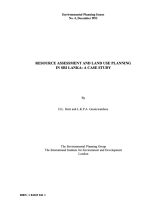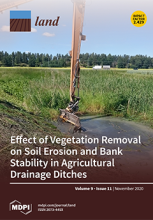/ library resources
Showing items 1 through 9 of 8258.Coming two years after a political transition from post-war authoritarianism, this Shadow Report to the United Nations Committee on Economic Social and Cultural Rights is framed in the backdrop of two concurrent processes of ‘transformation’ currently underway in Sri Lanka.
Land administration in Sri Lanka is institutionally and functionally fragmented and geographically incomplete. The current situation is an impediment to spatial planning and land and natural resources management with direct impact to economic growth and social development.
ABSTRACTED FROM EXECUTIVE SUMMARY:
This review does not attempt to be comprehensive. Instead, we highlight:
-
benchmarks in the evolution of land use policies in Sri Lanka;
Street trees, native plantings, bioswales, and other forms of green infrastructure alleviate urban air and water pollution, diminish flooding vulnerability, support pollinators, and provide other benefits critical to human well-being.
In West Africa, where the majority of the population relies on natural resources and rain-fed agriculture, regionally adapted agricultural land-use planning is increasingly important to cope with growing demand for land-use products and intensifying climate variability.
In a context of aging, low fertility, and progressive slowdown of both internal population mobility and international migration at working age, residential mobility at older ages was regarded as an emerging phenomenon in Mediterranean Europe, a region with increasingly attractive retirement place
Massive and rapid urbanization has led to population loss in rural areas, particularly in emerging and developing countries like China. As a result, houses in rural areas become vacant, and the house prices in cities, at the same time, skyrocket.
The functional diversification of coastal fishing communities has been a central objective of the Common Fisheries Policy (CFP) since the early stages of its implementation.
Land is one of the important input resources in a highly populous and land-scarce country such as Bangladesh. When different factors change (such as, geophysical, proximity, socioeconomic and climatic), there are dramatic changes in the spatial pattern of land uses.
Pagination
Land Library Search
Through our robust search engine, you can search for any item of the over 73,000 highly curated resources in the Land Library.
If you would like to find an overview of what is possible, feel free to peruse the Search Guide.






